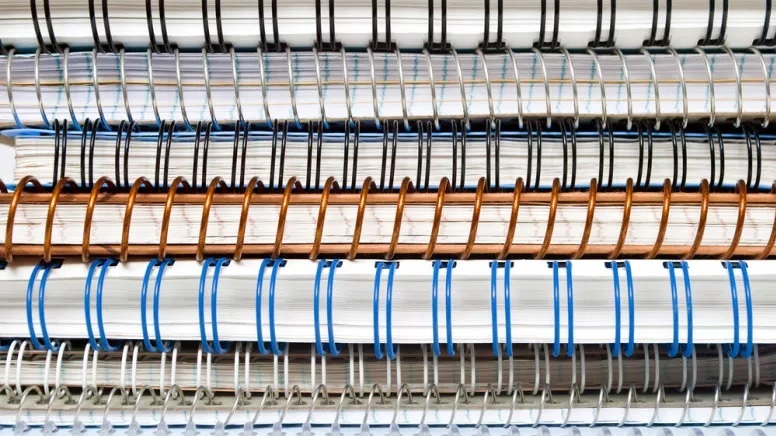

Thermal Binding vs Other Types of Binding
January 22, 2016So you need to bind something. What options are available to you? We’ve already walked you through the different types of binding, and also given you a beginner’s guide to thermal binding, but which should you choose for your binding job?
Here’s a quick guide to help you decide whether to use thermal binding or one of the various other types of binding available.
Which type of binding is the cheapest?
As with most things in life, you can spend as much or as little as you’d like on binding, and there are various options to you depending on what budget you have.
If you have a tight budget and you’re really not looking to spend much on your binding, then you might want to consider something like comb binding or wire binding. Both of these are very cost effective – you don’t have to spend a fortune on a binding machine (although, again, you can spend more if you want), and the combs and wires can be bought in bulk at relatively low prices.
However, if you want a really cheap option, then slide binders might be your best bet. They don’t cost a lot and don’t need any kind of binding machine.
When it comes to thermal binding, the machines can often by quite expensive, particularly if you want something heavy duty – our thermal binding machines are much more affordable. You may also find that thermal binding covers are more expensive than their comb and wire binding counterparts, although that’s not massively surprising when you consider they’re full covers.
So it really depends on your budget, but there are binding options available to you no matter how much you have to spend.
Which type of binding looks more professional?
If professional looking documents is of utmost importance to you, then thermal binding is the clear winner here. Thermal binding is much more akin to book binding than the other types and really does look incredibly professional. It’s great for brochures, catalogues and anything you want to send to make a real impact on your customers and clients.
Now that’s not to say that other binding types don’t look professional. Comb and wire binding can still look attractive, but do lack that extra ‘wow’ factor of thermal binding.
There is a kind of halfway house, however – Surebind / Velobind. Whilst not quite as professional looking as thermal binding, both these types of binding can still make your documents look incredibly appealing to the eye.
What type of binding is easiest?
Well none of the different types of binding are particularly difficult, to be honest. However, some are slightly easier than others.
Obviously, something like slide binding is probably the easiest as it doesn’t require any kind of binding machine and there’s little that can go wrong. Thermal binding is also reasonably easy, just requiring you to place your documents in a folder and popping them in the machine, letting the heat bind it all together.
Comb and wire binding are slightly tricker, and if your documents aren’t lined up properly with the combs or wires then it can require a little fiddling to get right, but it’s still not exactly rocket science.
Adding and removing pages
Are you binding a document that may require you to add or remove pages? If that’s the case, thermal binding isn’t really ideal. It’s not impossible to add and remove pages in a thermal bound document, but it’s not easy. It requires you to reheat the glue in the machine so the binding comes loose.
Combs and wires can be opened and then rebound easily with no trace. Slide binders and binding rings are also incredibly simple in this regard; just slide the binder off, amend your document and replace.
Which type of binding takes the longest?
Most types of binding are pretty quick. Comb and wire binding involves you punching the paper and then loading onto the comb/wire and closing, so once you know your way around the machine, you can get it done in no time.
Thermal binding requires you wait a minute or so for the glue to melt and bind, and then you need to leave it to cool for a couple of minutes. However, depending on the thermal binding machine you buy, you can often do more than one document at once, cutting down the time it takes.
We hope we’ve helped make your mind up which type of binding to use. If you’d like to speak to us about any aspect of binding, please contact us.



